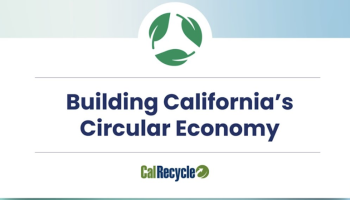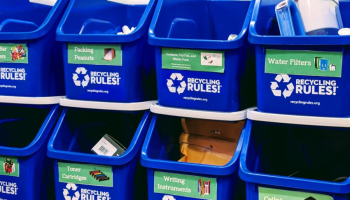Equating sorting with an exploit doesn’t work
In the name of sobriety and a circular use of resources, communities like Modesto seek to change the behavior of their constituents through multiple actions, according to a social psychology researchers. Unfortunately, the benefits of these operations are often low. They sometimes even generate incomprehensible perverse effects. Hence the interest in considering the issue through the prism of a set of psychosocial mechanisms.
Waste, water, energy, mobility… In the name of sobriety and a circular use of resources, communities seek to change the behavior of their constituents through countless actions: display, local communication, events, workshops, awareness-raising in schools, nudges, etc. Unfortunately, the benefits of these operations are often low. They sometimes even generate incomprehensible perverse effects. The phenomenon does have a name, however, it is the “cobra effect” – when the attempt to solve a problem results in making it worse. The term refers to a situation that occurred in India to regulate the cobra population in Delhi, under the British colonial regime, and illustrates the consequences of incorrect stimulation of waste management or recycling subjects.
Selective sorting: It will no longer be so much a question of avoiding pollution as of guaranteeing our supplies of strategic resources.
Some specialists in the circular economy in Modesto, CA, call for an overhaul of the organization of recycling in California, which is not very efficient in view of ecological and strategic imperatives. Over the years and communication campaigns, sorting waste has become a civic gesture for most Californian people.
Behind this gesture, a whole logistics deployed by local authorities allows manufacturers organized by sectors (for packaging, electrical and electronic equipment, toys, furniture, sports equipment, medicines, etc.) through a company (called an eco-organization) to recover their end-of-life products to ensure their recycling.
These sectors called “extended producer responsibility” (EPR), created in the 1980s to improve the management of our waste on the “polluter pays” principle, are today faced with new emergencies that are not only ecological, but also… strategic.
Indeed, the products that we use on a daily basis, in particular our electronic equipment, contain strategic materials that we do not have on our territory or that are particularly expensive to acquire. The government of California has defined a list of thirty-four of these critical raw materials, from rare earths to certain specific metals, but also more common ones such as aluminum, nickel and copper, the needs of which are growing rapidly.
Concerning this last metal, we will soon find ourselves faced with a definitive deficit of availability which will only worsen in the face of the explosion in demand due to massive electrification, in particular of mobility, while its extraction remains limited in the future.
What the government of California is doing to promote recycling
The government of California has been at the forefront of promoting recycling through a variety of comprehensive initiatives and policies aimed at reducing waste and improving environmental sustainability. One of these efforts is the California Integrated Waste Management Act (AB 939), which mandates that cities and counties divert at least 50% of their waste from landfills through recycling and other waste reduction strategies. This legislation has been instrumental in driving local governments like Modesto to implement effective recycling programs.
In addition, California has established the California Beverage Container Recycling and Litter Reduction Act (AB 2020), which created the California Redemption Value (CRV) system. This program incentivizes consumers to recycle beverage containers by offering a monetary refund for returned containers, significantly boosting recycling rates for bottles and cans.
The California Department of Resources Recycling and Recovery (CalRecycle) also plays a pivotal role in promoting recycling. CalRecycle oversees numerous programs, including grants and loans for recycling infrastructure development, educational campaigns to increase public awareness, dumpster rental services and support for the recycling industry to innovate and expand.
California has implemented the Extended Producer Responsibility (EPR) laws, requiring manufacturers to take greater responsibility for the end-of-life management of their products. This includes electronics, paint, and mattresses, ensuring these items are recycled rather than landfilled.
The state’s ambitious Zero Waste goals further exemplify its commitment to reducing waste. Legislation such as SB 1383, which aims to reduce organic waste disposal by 75% by 2025, also encourages composting and the diversion of organic materials from landfills.
Through these programs, California continues to lead by example, demonstrating how legislative action, public incentives and industry collaboration can effectively promote recycling and contribute to environmental sustainability in our nation.





